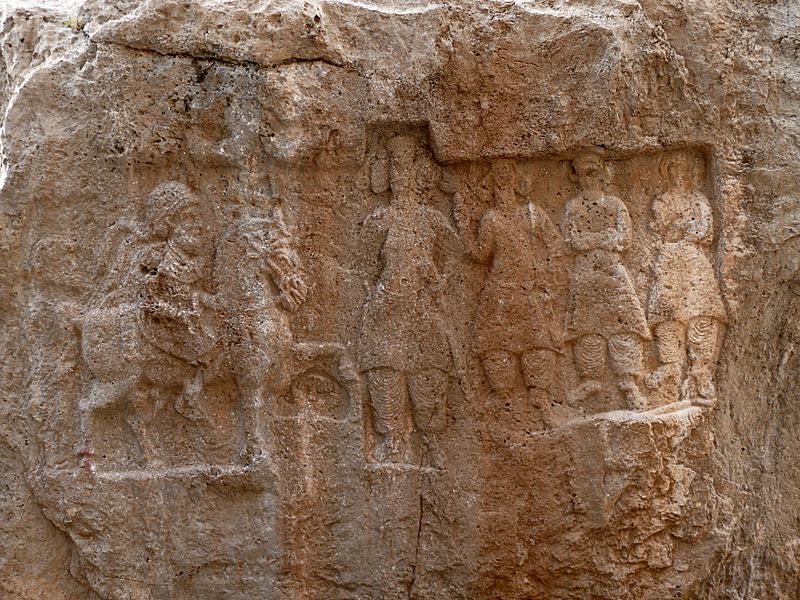Image: Xong-e Ashdar Parthian relief

Description: Parthian relief of Mithridates Ist of Parthia at Xong-e Ashdar. City of Izeh, Khouzestan province, Iran. Following the artistic path of the Lullubies, Elamites, Achaemenian Persian, and Seleucids, The Parthian rulers used the ancient Iranian art of Rock relief to mark the foundation of their new empire, and carved many of their reliefs on previous Elamite, Lullubies, or Achaemenian sites such as Bisotun, Izeh, or Sarpol-e Zahab, as an affirmation of continuity with previous Iranian dynasties. On an artistic point, several differences distinguish the Parthian art of rock relief: 1) Compared to the Achaemenian reliefs, results of a very official imperial art, the Parthian reliefs are more a provincial issues, ordered by local princes and carved by local artists, concentrated in the south of antic Kurdestan (actual Kermanshah province), and in the ancient Elymaid (Bakhtiari mountains in Khouzestan). Ancient Elamite, Lusites 2) Their themes are profane, and not religious. They introduce sceneries of resting, pleasure (drinking), hunting, and animal figures such as horses, and will strongly influence the later themes of the sasanian Persian rock reliefs. The influence from the Greeks remains important, as greek inscriptions or Nike goddess figures of winged victories testify. 3) Their fashion is rude (not deeply carved), representations are statics, undynamic, and frontal, fixing the spectator with big slide opened eyes. The Xong-e Ashdar rock relief is very important, being the first carved by the Parthian. The site choosen is Izeh, the ancient elamite city of Ayapir, wich hosts several Elamite rock reliefs. The relief was carved on an isolated rock, at the opposed side of a little Elamite relief. It shows Noblemen, princes, or courtiers paying alledgence to a horseman, identified as being Mithidates Ist of Parthia after his as a horseman. The relief has also 2 artistic particularities: first representation of a horse, and rare profile representation of a character. While the king parades on his horse followed by a servant walking, the courtiers either pay him respect by elevating an arm or join their hand in a humble attitude. Their baggy trousers are still worn in Iran. A winged Nike fly over the scene, blessing the winner. A similar scene was carved at Behistun.
Title: Xong-e Ashdar Parthian relief
Credit: Own work
Author: Pentocelo
Usage Terms: Creative Commons Attribution-Share Alike 3.0
License: CC BY-SA 3.0
License Link: https://creativecommons.org/licenses/by-sa/3.0
Attribution Required?: Yes
Image usage
The following page links to this image:

